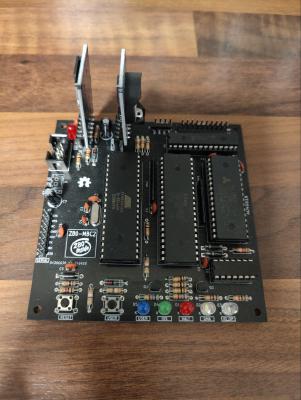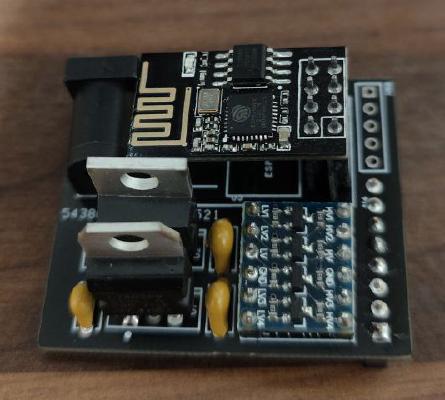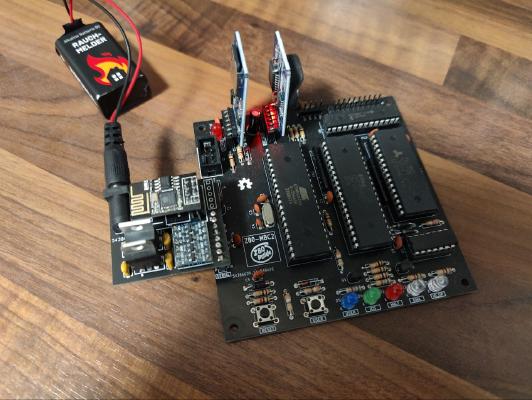3 minutes
Building a MBC2 + WiFi-Terminal
I’ve been kind of a fanboy of Z80 processor since I wrote my first gameboy emulator a few years ago, and started learning about 8-bit computing. After I’ve heared that the production of it will be stopped after 48 years of production, it was clear to me that I need to get my hands on one of those and do some soldering to build me a Z80 based computer. After some browsing on the web, for some DIY-Kits i’ve stumbled uppon the Z80-MBC2 project. And since I had most of the passives lying around, that sounded like an easy task and a fun weekend project. So I’ve started shopping the remaining parts and ordering the PCB and waited for the packets to arrive.
One week later and a few hours of soldering, I had my very own Z80 computer, and it even worked on first try 😁.

I quickly realized that having the MBC2 connected via USB all the time would bug me. Because writing software for it on my laptop is less relaxing if you have wires connected all the time.
With the set destination of running the MBC2 wireless, I’d look through my parts bin and connected the MBC with a few wires to a breadboard, as well as a ESP-01S and a level shifter module to handle the 3.3V <-> 5V convertion and loaded the WiFiTelnetToSerial example sketch to the esp to connect to the MBC2 by using telnet.
For now every entered character is echod back twice, but that is a problem for future me.
On the sketch I’ve also added a few lines to send a signal on the DTR line of the MBC, so that the computer resets, when a client connects.
After that I had another look through my parts bin, to find some components for voltage regulation, where I found a L7805CV and a LD1117V33. Time to open easyEDA and design a simple PCB to handle the voltage regulation and levelshifting.
As a final product I’ve now got a plug-on telnet adapter and power supply for the MBC2 where i can just provide 9-12V for example by a 9V block battery and can connect to it by telnet via wifi.


Now it’s time to get back to writing some assembly code for it. As a first demo, i will write some hex-dump application for CP/M. Just to get started with this operating system.
BTW if anyone wants to have a PCB of the MBC2 or the serial adapter let me know, I have a few spare, that I will not need, so i would give them away. I could also provide the schematics or the gerber files for the serial adapter, if anyone want’s to build their own version. Though I’ve already found some possible improvements.